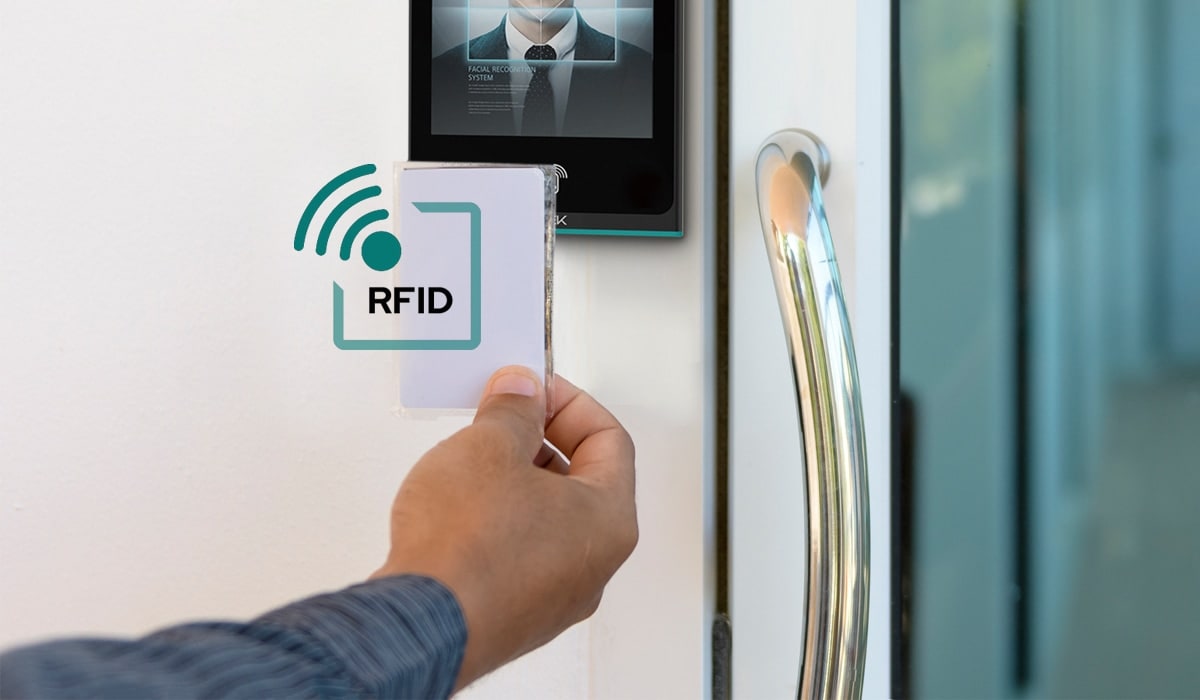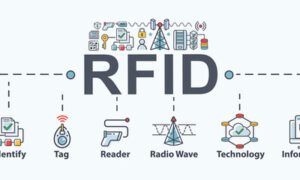Introduction
In today’s fast-paced and tech-driven world, companies and industries are always looking for new ways to make their processes better and more efficient. RFID tags are a technology that has gotten much attention and is being used in many areas. With RFID tags, radio frequency identification (RFID) technology makes tracking and handling assets, goods, and data easy. Among these, passive RFID tags stand out for their cost-effectiveness and varied uses.
What are RFID tags?
Small electronic devices called RFID tags use radio waves to send data straight to a reader nearby. These tags consist of a computer, a sensor, and rarely a fuel source. They store data that an RFID reader can read to quickly and accurately track and identify things, goods, and even people in certain places.
Active RFID tags and passive RFID tags overall. Active RFID tags possess an internal power source internally. This enables information transmission across vast distances. Passive RFID tags lack internal power sources. They derive energy from neither batteries nor some external source somehow. Instead, they receive power from the electric waves sent out by an RFID reader. This trait makes passive RFID tags more cheap and perfect for various uses.
How Do Passive RFID Tags Work?
Passive RFID tags rely on the electromagnetic energy of the RFID reader. The passive RFID tag absorbs this energy when the reader receives the signal, and it uses the energy to excite the microchip of the RFID tag. The microchip then translates the energy and sends back a signal that carries the stored information to the reader. That’s once again all about speed, so enable fast input and output.
Passive RFID tags are smaller, lighter, and cheaper than active ones. They don’t need a battery, which makes them more efficient. However, their read range is often smaller, generally covering just a few meters. This depends on the tag type and the reader’s power.
Applications of RFID tags in Various Industries
The freedom of RFID tags, especially passive RFID tags, has led to their acceptance by numerous companies. Below are some of the most common applications:
- Logistics and Supply Chain Management
Supply chains and delivery systems depend on RFID tags to improve product tracking. Adding passive RFID tags to products and packaging enables organizations to trace their commodities at every point in the supply chain. This method offers real-time tracking. This helps eliminate errors and enhances transparency in shipping procedures.
- Retail Industry
Retailers harness RFID tags to keep correct product records and improve operations. Passive RFID tags help avoid stockouts, boost product movement, and improve buyers’ shopping experiences. RFID tags also boost security, helping to reduce theft and better track goods.
- Healthcare Sector
In healthcare, RFID tags improve asset control and patient safety. Hospitals and clinics use inactive RFID tags to track medical tools, manage supplies, and monitor patient information. This technology improves process speed and lowers the chances of human mistakes.
- Manufacturing and Industrial Automation
Manufacturers use passive RFID tags to improve their production methods and manage their operations more effectively. These tags track raw materials, components, and finished goods on the production line, reducing human data entry and improving product quality.
- Access Control and Security
Companies rely on RFID tags in access control systems to control built-up security stations. Adding passive RFID tags to employee ID cards boosts security and stops unauthorized access.
Benefits of Using RFID Tags and passive RFID tags
The usage of RFID tags and passive RFID tags gives numerous benefits to businesses and groups, including:
- Cost Efficiency: passive RFID tags are cheaper than active tags, making them ideal for large-scale uses.
- Improved Accuracy: RFID tags provide exact data recording, lowering the chance of human mistakes.
- Enhanced Security: Businesses can increase their security processes by using RFID tags for entry control.
- Real-Time Tracking: RFID tags offer quick info on the position and state of assets, improving corporate efficiency.
Versatility: passive RFID tags can be used in a wide range of uses, from shopping to healthcare.
Choosing the Right RFID Tags for Your Needs
A few important requirements exist for businesses that want to select RFID tags. Businesses require strategic consideration for application requirements, read range distances, weather resistance, and financial planning. Passive RFID tags serve businesses well in applications requiring minimal extended read ranges besides cost-efficient requirements.
Businesses searching for premium RFID tags, including passive types, should examine jiarfidtag.com as their best option for product selection. With their broad range of products, consumers will easily discover a solution that meets their exact requirements.
Summary:
Active and passive RFID tags provide major benefits in speed, security, and data management. Industries are changing. Using RFID tags is a smart choice for companies. It helps them boost efficiency and stay competitive. Jia RFID Tag offers reliable options. Companies can easily add RFID tags to their processes. This leads to success and innovation.

































